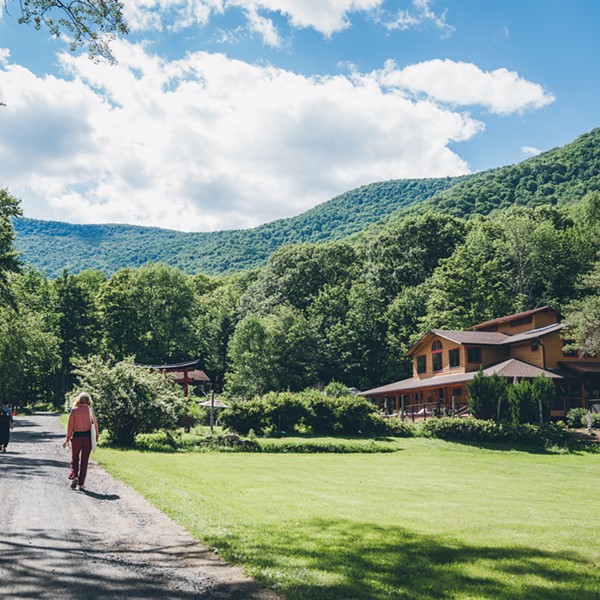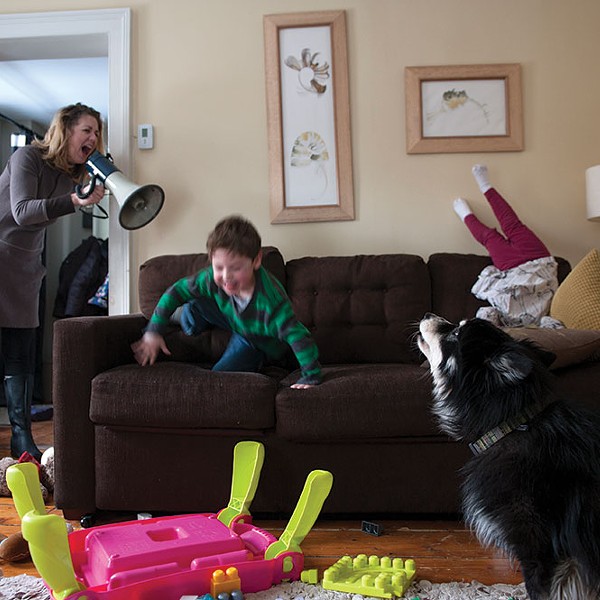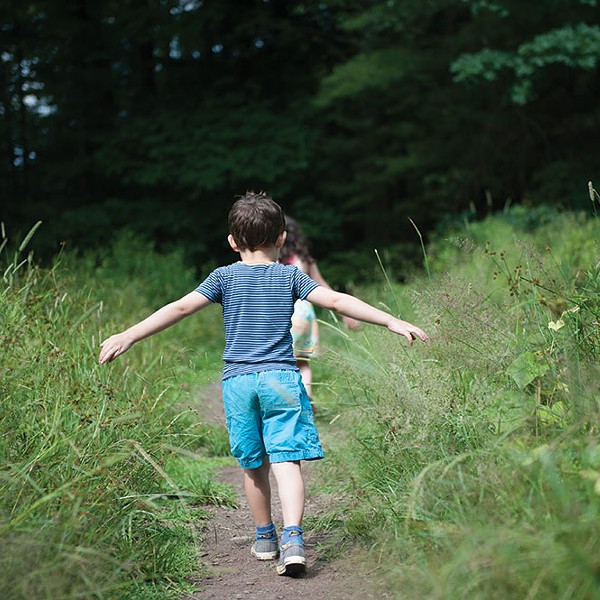and weeds spring up amid our antipathy.
— Dogen Zenji, Genjokoan
People often ask if we are raising Azalea as a Buddhist, and, if so, what that means. It’s true that we have Buddhas in the house; we sit, we chant, do services, light incense, spend a lot of time at a monastery, and have many shaven-headed monk friends. So there is all that. But Buddhism is a little different from the Judeo-Christian tradition, where there are certain doctrines we could teach a three-year-old; for instance, that God exists, and He loves you. It’s not that Buddhism has no core beliefs, but the heart of our practice is based on some fundamentals that are a bit trickier to translate in a Sunday school setting. And they are meant to be realized by each individual in their own lives, not accepted as true.
So while Azalea is not asked to memorize any basic principles like Form is emptiness and emptiness is form; form is exactly emptiness and emptiness is exactly form, catchy though it may be, we hope that by growing up with practitioners—her parents and the larger sangha—she’ll get the gist, perhaps some merit, or at least benefit from our effort. But the bottom line is that in order to raise a Buddhist, we need to actually practice Buddhism. What exactly does that mean for a family, beyond carrying on in some Buddhist fashion? There is, of course, no one answer, or the perfect Buddhist-family style, but one thing is for sure: As the late Tibetan teacher, Chogyam Trungpa Rinpoche wrote, “Inasmuch as no one is going to save us, to the extent that no one is going magically to enlighten us, the path we are discussing is called ‘the hard way.’”
For instance, take the other day. It was the first day back to preschool, and there was indeed a crispness, a certain bustle in the air, which got me into my favorite feeling-state of happy melancholia, filled with a longing to wear cable-knit tights. But instead, being the parent now, I packed Azalea’s ham with mayo on pita bread with back-to-school delight. I even tied up a butter cookie in waxed paper, with a note written on a heart I cut out from a yellow post-it note: Happy first day of school, Azalea! I love you, Mommy.
Okay, I confess. The little heart thing got me feeling pretty darn good about myself. Kind of puffed up, even. Like the only mom in the world who added a little extra touch to her kid’s lunch that day.
So when Azalea strolled in to the kitchen from where she was eating her breakfast and leaned against the fridge, staring up at me, and said, “Mommy, I wish I could be just like you,” I was kind of not totally surprised. I mean, really, who wouldn’t want to be just like me, right? And then I asked in an almost rhetorical way,
“Why’s that, honey?” To which Azalea replied, “Because then I could be angry all the time.”
Wow!
“Do you really think I’m angry a lot?” I asked.
“Um-hmm,” she answered, nodding.
And then I figured if I kept asking questions about the specifics of this…interesting…statement, I might be able to crack the witness and get her to confess that she was making the whole thing up!
So I asked, “What do I look like when I’m angry?”
“A mean animal.”
Uh-oh.
The masochist in me couldn’t stop, so I followed up with, “And what does the mean animal look like?”
And there before me stood a perfect mirror.
It would be nice if I believed that God was up there, loving me, and I could have prayed to Him to grant me wisdom in that moment, but no such luck. Instead, as Trungpa Rinpoche writes, “The whole point of the hard way seems to be that some individual effort must be made by the student to acknowledge [her]self, to go through the process of unmasking…to stand alone, which is difficult.”
So this is what I did:
1) Noticed the impulse to berate myself: You bad, bad, mean, animal! Then I let it go.
2) Noticed the impulse to soothe myself: At least you’re not as bad as that other, really bad mom. At least your kid can come up with a vivid metaphor! At least she’s honest! And then I let go of all that.
3) Noticed the impulse to fix the situation. Quickly. Feeling remorse for all the permissive growling I do, I noticed the urge to have a totally indulgent and inappropriate conversation with Azalea about how sorry I am for all the times I lose my temper or speak harshly. And how I vow to change, really I will, I promise!
And then I let go of trying to fix anything, including myself.
4) Finally, I remembered to move my awareness back into my body and my wild (animal) mind, to just let the sting sting (angry all the time? Dang!), and just stay there in the kitchen, reconnecting with the ground, with Azalea, with getting ready for the first day of school. As Trungpa Rinpoche writes, “We have committed ourselves to the pain of exposing ourselves. It will be terrible, excruciating, but that is the way it is.” And indeed, that is how it was.
But then you have to let go of that, too.
The mean-animal incident happened a few days ago now. It is still with me, and I am definitely making more of an effort to use kind speech, be patient, and not give in to my inner mean animal as freely. After all, letting go doesn’t mean giving up. Lord knows if there is anything I am passionate about, it’s not giving up: Whether you call it being a Buddhist or just being a real person, whether you believe in God, strive for enlightenment, both, or neither, I know in my heart that by not moving away from whatever it is that hurts, I stand a chance of connecting to what I love. And what I love keeps growing.
So what does it mean to raise a Buddhist? The easy part is sharing our tradition with Azalea. The hard part is practicing that tradition, together. But when I’m lucky, the youngest person in the family can help me back onto the path, demanding that I take off my ridiculous Buddha mask.
















